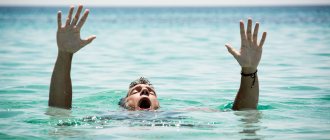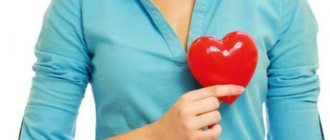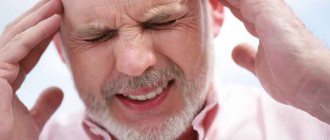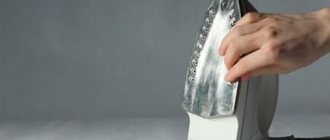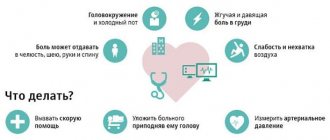The human brain can live without oxygen for no more than 5-7 minutes. After this, the nerve cells begin to die. During a stroke, as a result of blocking the lumen of blood vessels or hemorrhage, the blood flow to the brain tissue is disrupted. Damage occurs to the nerve centers responsible for certain functions.
Our expert in this field:
Tafintseva Ekaterina Anatolevna
Head of hospital, general practitioner
Call the doctor
Some numbers and facts:
- Every year, approximately 800,000 people have a first or repeat stroke.
- Every 40 seconds, someone in the world experiences this condition.
- Every 4 minutes, one person dies from a stroke.
In 80% of cases, the pathology can be prevented.
Types of stroke
Depending on the pathological processes occurring in the brain, there are three types of strokes:
- Hemorrhagic. Occurs as a result of hemorrhage, for example, when a cerebral aneurysm ruptures. This is the most dangerous condition, which most often leads to death.
- Ischemic. Blood flow to the brain tissue is disrupted as a result of blockage of the vessel, most often by a blood clot.
- Transient ischemic attacks. This is a condition in which there is a short-term disruption of blood circulation in the brain. Stroke-like symptoms occur and usually resolve within 24 hours.
Early treatment can help save the life of a person who has had a stroke and prevent serious consequences.
Prognosis for older people
Stroke has the most severe consequences for older people. With the most favorable prognosis, one can count on only a partial restoration of those functions that depend on the lesion. There are movement disorders and maladjustment in society.
Almost half of the victims suffer post-stroke coma, which leads to either death or paralysis (complete or partial).
Probability of disability
Disability in older people after a stroke occurs in 100% of cases, and the third group, in which mild impairment of motor functions and difficulties in self-care are noted, is rare, and more often the consequences are more severe.
Problems arise not only with the musculoskeletal system, but also with vision, hearing, and speech. Patients who can move independently should not be ignored. They may get lost or begin to behave inappropriately in society.
In most cases, after illness, older people must be provided with permanent, lifelong care.
Possible complications
It is impossible to predict how an attack will affect the human body. Most often there are:
- paresis and paralysis;
- anemia;
- strabismus and other vision problems;
- violation of the swallowing reflex;
- speech defects;
- hearing impairment;
- disruptions in the gastrointestinal tract;
- fecal and urinary incontinence;
- cardiac ischemia;
- Parkinson's disease, etc.
How long do they live: forecasts for life after a stroke
The prognosis depends on many factors. This includes the general state of health, the type of stroke, the timeliness of care, the experience of doctors, and subsequent care.
Mortality is increased with hemorrhagic stroke. No more than 35% of patients survive. Survivors of ischemic stroke survive in 75% of cases.
According to statistics, more than 65% of patients die within a year after the disease, and in the first month this figure is 35%.
Why is this condition dangerous? What are the possible consequences of a stroke?
More than 2/3 of surviving patients become disabled. Various complications may develop:
- Partial (paresis) or complete (paralysis) loss of movement in certain muscle groups. Disorders can be expressed in varying degrees: from gait disorder to paralysis of the right or left half of the body. Some patients experience swallowing and speech disorders.
- Sensitivity disturbance and discomfort. When sensitivity is lost in certain parts of the body, discomfort, pain, and tingling may occur.
- Disorders in the cognitive sphere. Many patients experience deteriorating memory and thinking.
- Changes in behavior and disturbances in the emotional sphere. A person may become withdrawn, apathetic, and it becomes more difficult for him to control his emotions.
Serious brain damage can lead to the death of the patient.
Focal symptoms
One or another part of the brain is responsible for specific processes occurring in the body.
When normal blood flow ceases to be provided in one of them, specific symptoms are observed. This is what the doctor relies on when making a diagnosis. You can find out which area is affected by the nature of the clinical manifestations. Frontal cortex:
- convulsions;
- slurred speech;
- inability to make voluntary movements;
- a sudden change in habitual behavior.
Parietal lobe cortex:
- tactile sensitivity is lost;
- skills in basic arithmetic, writing and reading are lost.
Temporal lobe cortex:
- deafness develops, tinnitus is recorded, and certain hallucinations appear;
- Memory is impaired and a feeling of déjà vu develops.
Occipital cortex:
- pathology of the optic nerve is observed;
- the patient does not recognize people and objects familiar to him;
- Visual illusions and hallucinations develop.
Useful video on the topic:
Modern methods of treating stroke
From the moment symptoms first appear, time is critical. The patient should be examined by a neurologist as quickly as possible, and medications should be administered immediately.
Treatment depends on the type of stroke. Drugs that are suitable in some cases may be harmful in others.
In case of an ischemic attack, you need to immediately, in the first 4 hours, begin administering drugs that dissolve blood clots and prevent the formation of new ones. Aspirin and tissue plasminogen activator are used.
Sometimes surgical treatment methods are used: the introduction of tissue plasminogen activator directly into the cerebral arteries, stenting of vessels, removal of their inner lining affected by atherosclerosis.
During a hemorrhagic attack, it is necessary to reduce total blood pressure and blood pressure in the cerebral vessels. If the patient has previously taken medications that reduce blood clotting, the doctor may prescribe medications with the opposite effect or a blood transfusion.
Rehabilitation treatment is important. Patients who have suffered an attack are prescribed classes with a speech therapist, physiotherapy, physical therapy, mechanotherapy, and massage. This helps improve and speed up the recovery of impaired functions. Psychological help may be required.
During a stroke, seconds literally count. The prognosis depends greatly on how quickly treatment is started. If you suspect a vascular accident in the brain, you should immediately consult a doctor. Get help from a doctor in our neurological department by calling
Stroke is a dangerous condition that can lead to death and disability. The prognosis directly depends on how quickly the patient was examined by the doctor and treatment was started. Therefore, it is important to be able to recognize the first signs of this condition, and if they occur, you should immediately call a doctor.
Rehabilitation
Rehabilitation of a patient who has suffered a stroke is of great importance. Poor blood circulation in the brain causes many pathologies, and only full compliance with the rules protects against relapse and improves the patient’s condition.
The emphasis should be placed not only on physical, but also on psychological recovery. The patient must feel supported so that complexes due to inferiority do not develop even more.
Particular attention should be paid to the diet. It should consist only of healthy foods and contain the maximum amount of vegetables and fruits.
It is advisable to purchase an orthopedic mattress, even if motor functions are relatively normal. If they are violated, you need to ensure that the patient’s position changes regularly so as not to provoke the appearance of bedsores.
Doctors often prescribe diuretics to help cope with leg swelling, a problem that often plagues patients after a stroke. If there are signs of aggression or, conversely, apathy, it is necessary to involve a psychologist. His help will be needed not only by the patient, but also by those who care for him.
What are the first signs and symptoms of a stroke to look out for?
In some patients, the attack manifests itself clearly: they fall and lose consciousness. But it also happens that the signs are not clearly expressed, and it is difficult to recognize a catastrophe in the blood vessels of the brain. A person may think that another disease is just manifesting itself so strongly, for example, a hypertensive crisis.
Characteristic signs of stroke in men and women:
- Headache. It is quite strong, often accompanied by dizziness, nausea, and vomiting.
- Paralysis and numbness in different parts of the body. The problems can occur in one arm, leg, face, or entire half of the body. They are expressed to varying degrees, depending on which part of the brain is damaged and how severely.
- Speech impairment. The patient has difficulty pronouncing words and phrases, or has problems understanding someone else’s speech.
- Visual impairment. Double vision may occur, dark spots and “spots” appear before the eyes.
- Loss of coordination of movements, sense of balance, severe dizziness.
Even if the symptoms that a person has do not clearly indicate a stroke, but there is at least the slightest suspicion, you should immediately contact a neurologist. Better to play it safe. Call an ambulance.
Complications
If a person has had a stroke and the symptoms (first and secondary) were ignored, then it can cause very dangerous complications, including the following:
- loss of visual and auditory perceptions;
- immobility;
- coma;
- problem with the speech apparatus;
- the appearance of dangerous diseases of the heart and blood vessels;
- memory problems and decreased mental abilities of a person;
- epilepsy;
- lack of coordination of movements;
- problems with urination;
- death.
What can be done to identify symptoms of a stroke in a patient?
Some simple tests can help identify additional signs of stroke:
- Ask the patient to raise their hands. The arm on the affected side does not rise at all, or rises lower than the healthy one.
- Ask the patient to smile. One part of the face “smiles”, the other remains downcast.
- Ask the patient to stick out his tongue. The tongue deviates to the side.
- Ask the patient to bare his teeth. One half of the mouth is grinning, the other is closed.
- Ask the patient to frown. One eyebrow frowns more than the other, and asymmetry is noticeable.
- Ask the patient to repeat a phrase. The patient's speech is slurred and does not sound as usual.
If you notice any of these symptoms, there is a risk that the person is having a stroke. Call an ambulance immediately. Until the doctor arrives, the patient must not be left alone; he must be constantly under supervision - his condition may worsen at any time.
If suspicious symptoms occur, you should immediately consult a doctor at a neurology clinic. Remember: the minutes are ticking! The later the patient receives help, the worse the prognosis. Signs of a stroke in a man or woman require immediate medical attention. To get a consultation with a neurologist, contact us by phone.
Take care of yourself, book a consultation now
Various causes lead to ischemic and hemorrhagic stroke. Ischemic attacks are more common - in approximately 85% of cases.
First aid
Before the doctors arrive, you need to provide all possible first aid yourself. To do this, do the following:
- A fresh air flow should be provided.
- You need to unbutton your clothes.
- The victim must lie down (absolutely cannot get up!)
- Blood pressure should be checked and if it increases, the patient should be given tincture of valerian or hawthorn. But the pressure cannot drop by more than 15-20% of what was previously measured.
- If the urge to vomit occurs, the person should be turned on his side.
- You cannot use ammonia, antispasmodics, or any medications at all, so as not to worsen the patient’s condition.
- When symptoms of epilepsy appear, the patient is placed on his side and his head is held to avoid injury to it during convulsions.
- If the patient does not show signs of life, you need to provide him with first aid until the medical team arrives.
The main causes of strokes:
Ischemic stroke
When the blood vessels in the brain become severely narrowed or blocked, ischemia occurs in the tissue—a disruption of blood flow. If this condition persists long enough, the nerve cells begin to die.
Main reasons:
- Narrowing or blocking of the lumen of blood vessels by a thrombus.
- Narrowing or blocking of the lumen of blood vessels by atherosclerotic plaque.
- Embolism is a condition when a blood clot or other particle enters the brain vessels through the bloodstream and clogs them.
Hemorrhagic stroke
Hemorrhage occurs in the brain tissue. As a result, blood flow to nerve cells is disrupted.
Main reasons:
- High blood pressure, hypertensive crisis (an attack during which there is a strong increase in blood pressure).
- Rupture of an aneurysm - a section of the artery wall in which there is protrusion and thinning.
- Long-term use of drugs that reduce blood clotting.
Treatment for stroke depends on its causes. Therefore, from the moment the first symptoms appear, it is very important that the patient is examined by a doctor as quickly as possible.
Causes of the disease
A stroke is a disruption of normal blood flow to the brain; due to a lack of nutrients, brain tissue dies. When some of the cells stop functioning, paralysis occurs, and often a person stops speaking clearly. When blood vessels rupture, a hemorrhagic type of stroke occurs, and when they are blocked, an ischemic stroke occurs.
Reference! The disease can be prevented only by controlling the main risk factors: blood pressure, bad habits, blood sugar levels.
Let's briefly talk about the causes of stroke. These include the following:
- blockage or complete rupture of a cerebral artery;
- Most often, the disease affects people with a weak circulatory system;
- atherosclerosis;
- damage to the wall of the defective artery.
In general, the primary cause of this disease is considered to be disruption of the functioning of key nerve cells responsible for body functions. The consequences of the disease are very serious. It is one of the leading causes of disability and is in third place in the number of deaths.
What factors increase the risk of stroke?
If these factors are present in your life, your risks are increased:
- Unhealthy diet: when the diet is high in fat and sugar.
- High blood pressure. Normally, it should be between 120 and 80 mm. Hg Art. The higher these numbers, the higher the risk.
- Smoking, including passive smoking.
- Age over 55-60 years.
- Overweight, obesity.
- Heredity: If you have relatives who have had a stroke, you are at greater risk.
- Diabetes.
- High levels of “bad fat” cholesterol in the blood, atherosclerosis.
The pathology occurs more often in men than in women.
How to avoid a stroke or its recurrence
You can prevent a stroke or, if it has already happened, a relapse, by taking prevention seriously. The main method of prevention is improving lifestyle. This concept includes a balanced diet, giving up bad habits, correcting excess body weight, sufficient physical activity, controlling blood pressure, getting enough sleep at night, and avoiding stress.
A healthy lifestyle is the basis of both primary and secondary prevention of strokes
If a mini-stroke or stroke occurs, it is important to undergo a course of drug therapy aimed at improving cerebral circulation and to be regularly monitored by a doctor. Effective rehabilitation, as well as prevention of possible relapses, is sanatorium treatment.
What measures help prevent stroke?
Prevention comes down to eliminating or minimizing the impact of all those factors that increase the risk of cerebrovascular accident. The recommendations are simple:
- Eat healthy.
- Maintain a normal weight.
- Try to completely give up smoking and other bad habits.
- Monitor your blood pressure. It is good to have a home blood pressure monitor and take measurements daily.
There are screening studies that help assess the condition of cerebral vessels and risks. Seeing the results of studies and analyses, our neurologists can give recommendations that will help prevent a catastrophe in the cerebral vessels.
According to statistics, up to 80% of strokes can be prevented. In addition to a healthy lifestyle, it is important for people from high-risk groups to visit a doctor on time, undergo examinations, and follow the recommendations of a neurologist. Get advice from a specialist at our neurology clinic “Medicine 24/7”. Contact us by phone.
A person who has had a stroke should be taken to hospital as quickly as possible. The earlier the correct diagnosis is made and treatment for a stroke is started, the higher the likelihood that the patient will survive and will not develop severe complications in the future.
For relatives and people who are nearby, it is very important to quickly understand what happened to the person and immediately call an ambulance. In English-speaking countries, doctors recommend using the abbreviation FAST (if you read it by letter, you get a word that is translated into Russian as “fast”), which makes it easy to remember what needs to be done:
- F – face drooping: “lowering of the face.” When a person tries to smile, it can only be done with one half of the mouth, while the other remains lowered.
- A – arm weakness: “weakness in the arm.” When you try to raise your arms up, one of them does not rise at all, or rises worse, less than on the healthy side.
- S - speech difficulty: “difficulty with speech.” It is difficult for a person to understand someone else’s speech, to repeat phrases, he speaks indistinctly, his tongue becomes slurred.
- T – time: “time”. It's important to act quickly. If one of these signs occurs, you should immediately call an ambulance.
Recovery
The rehabilitation period for a patient with cerebrovascular accident lasts quite a long time. The first 6 months after a stroke are considered the most favorable for recovery. This time should not be wasted; you need to carefully restore lost body functions.
First of all, you should pay attention to the room where the patient spends his time. The room should be as bright as possible, ventilated frequently and should be wet cleaned every day.
The mattress on the bed should be hard. For bedridden patients, it is necessary to purchase special diapers. They are also recommended to perform specially designed breathing exercises daily to maintain normal function of the respiratory system.
Adjustments should be made to your diet. Reduce salt and fat intake to a minimum. Constantly monitor your blood pressure.
Reviews from our patients
- “Every day I watched in admiration and felt the love, care and professionalism of nurses and orderlies” September 1, 2021
“On October 31, I was admitted by ambulance to a 24/7 hospital in a pre-stroke condition and immediately fell into the gentle hands of nurse Tanechka. Tatyana surrounded me with care and I felt that I would feel good here. Having stayed in the clinic from October 31st to November 9th, I watched and felt in admiration every day...read more
- “Treatment has been carried out, after which I am taking my mother home”
“Treatment has been completed, after which I am taking my mother home” July 18, 2021
Our clinic often receives patients who have been refused treatment in public medical institutions. We are not afraid to take on difficult cases and always try to help as much as possible. The patient's mother had a stroke. The daughter did not know what to do, because the regular ambulance doctors did not hospitalize them. “Medicine 24/7” accepted them, carried out examinations and treatment. Now the daughter is going home with her mother. "We…
read more
- “Now I know, a stroke is not the end of life...” June 27, 2018
You never know what lies ahead. I went in for sports all my life, didn’t smoke, drank only on holidays, and went to the sea in the summer. And then my whole life collapsed. Stroke. It would be better to die than to remain like this for the rest of my life. I couldn’t really speak, I was ashamed to go out into the street, everyone was looking around and looking at you, the place...
read more
- Thank you for your human kindness, help and friendship August 14, 2021
Thanks to the daily care of sister-hostess Vera Alexandrovna, an unusually comfortable environment has been created in the department. Many thanks to the barmaid Lena and Sveta for their sensitive and responsive attitude. Everything is always delicious and perfect! Thank you for your human kindness, help and friendship to all the clinic nurses. Always perfectly clean and comfortable! Special thanks to the super professional rehabilitation doctors Kirill and...
read more
Medical examination
If a stroke is suspected, the doctor must act quickly. Ambulance team specialists conduct an examination, identify characteristic symptoms, measure blood pressure, and conduct an ECG with a portable device. The patient is administered the necessary medications and immediately transported to the hospital.
At the hospital, the patient is again promptly examined, placed in the intensive care unit, treatment is started and an examination is prescribed.
Remember: only a neurologist can correctly diagnose a stroke and help. The patient should be immediately taken to the clinic. Do not waste time and do not self-medicate. A person's life may depend on how quickly you act.
Instrumental methods for diagnosing stroke
The following tests are prescribed in the hospital:
- Angiography of cerebral vessels. A special contrast agent is injected into the vessels, then X-rays are taken. The photographs show the outlines of painted vessels. The study is usually carried out if there is a suspicion that the stroke occurred as a result of hemorrhage from an aneurysm or arteriovenous malformation.
- MRI and CT. They help detect areas of brain tissue damage, hemorrhages, tumors and other pathological changes.
- Electrocardiography. It is carried out to diagnose arrhythmia, blood clots in the cavities of the heart, which could come off, penetrate into the vessels of the brain and cause a stroke. Sometimes daily ECG monitoring is prescribed to detect arrhythmia.
- ECHO-cardiography (ultrasound of the heart). Using ultrasound, you can examine the cavities of the ventricles and atria and detect blood clots.
- Ultrasound of the carotid arteries. Allows you to detect atherosclerotic plaques and blood clots.
General symptoms
The harbingers of the disease are easy to recognize by certain symptoms, signaling a violation of proper blood flow.
Once diagnosed, a stroke guarantees a 50% success rate for its treatment and reduces the risk of serious consequences.
The sooner the patient is in the hands of doctors, the faster he will return to a normal and familiar way of life.
Precursors that indicate an impending stroke appear as follows:
- a sharp jump in blood pressure;
- loss of consciousness;
- rupture of the vessel wall.
The signs of an impending brain stroke should be well known to those at risk of developing the disease. We are talking about people with genetic inheritance, those who do not adhere to a normal diet and lead a sedentary lifestyle, and are in a constant state of stress.
Thus, the characteristic signs of an upcoming attack are:
- causeless fatigue;
- jumps in temperature indicators;
- increased drowsiness and apathy;
- dizziness;
- fluctuations in blood pressure.
Not all signs will necessarily make themselves felt.
Some may occur in a less pronounced form than others.
How to recognize the onset of a brain catastrophe in time?
There are the first symptoms; they appear before a stroke, significantly worsening a person’s condition. Among them are the following:
- muscle weakness. At the same time, you feel aches throughout your body. It is difficult for a person to make any movements and turn the tongue;
- headache. This indicates that a stroke has already occurred. Then the pain syndrome becomes more pronounced, the person feels sharp tingling and compression in the temples. It is recommended to raise the patient’s head or try to press it to the chest;
- vomiting and unconsciousness;
- paralysis. It can take away either one functional side or both at once;
- blurred vision. Dark circles appear in the patient’s eyes, objects become blurred;
- convulsions;
- disorders in the central nervous system , manifested by memory loss, hearing impairment and lack of spatial orientation.
Important! A stroke is a disease in which you immediately need to call an ambulance. Self-medication can lead to disastrous results.
What is the importance of modern diagnostic methods in stroke prevention?
If you undergo screening on time, know your risks and take the necessary measures, the risk of stroke can be greatly reduced. Research shows that this condition can be prevented in 80% of cases.
Older people need to regularly visit a doctor, take a general and biochemical blood test, and undergo studies that help assess the condition of the cardiovascular system and cerebral vessels. This is an important stroke prevention measure.
In our neurological clinic you can undergo an examination and receive recommendations from a specialist doctor. It doesn't take much time, but it helps greatly reduce risks. Many people who are bedridden due to severe complications of a stroke could still lead a fairly active life, work, do their favorite things, and enjoy spending time with their children and grandchildren. Take care of your health in time. Make an appointment with a neurologist.
Get a consultation with a doctor
Nerve cells can survive without oxygen for only a few minutes, so first aid for a stroke should be provided by a doctor as quickly as possible. The earlier treatment for a stroke is started, the fewer brain cells will die, and this directly affects the prognosis.
Medications help stabilize the patient’s condition, prevent serious complications, and in some cases, save lives.
But another area of treatment is also of great importance - rehabilitation of the patient after a stroke. After all, a catastrophe in the brain has already occurred; some neurons have already died. This leads to certain neurological disorders and affects the patient’s subsequent life.
Why is rehabilitation needed? Ideally, in order to completely restore the impaired functions of the nervous system. If this is not possible, we need to make sure that the person’s subsequent life is as full as possible, so that he can take care of himself, do business, do not experience psychological discomfort, and can feel like a full-fledged member of society.
A stroke affects all areas of a person’s life: his physical and psychological state, ability to cope with everyday activities, social activity, financial situation (if previously he could work and provide for himself, but is now bedridden). Rehabilitation can continue for years. The most complete recovery after a stroke can only occur with the participation of neurologists and other specialists.
First aid for a stroke before the ambulance arrives
It is difficult to provide first aid to yourself for a stroke. Therefore, you need to immediately call an ambulance and call relatives and neighbors.
Basic rules for what to do in case of a stroke before the ambulance arrives, if no one is nearby:
- free your chest from clothing;
- open a window in the room;
- lie on your back so that your head is higher than your body;
- do not move unless necessary.
Algorithm of what to do and how to help a person with a stroke before the ambulance arrives:
- Reassure the patient if possible . Stress aggravates the condition of the brain and contributes to the rapid progression of the disease.
- Call an ambulance at 112 or 103 from your mobile phone .
- Provide resuscitation measuresI. If a person is not breathing, then artificial respiration is given to him (see the picture).
If there is no pulse, then first aid is supplemented with artificial heart massage until the ambulance arrives. Massage technique:- the right palm is placed on the left or vice versa;
- The lower palm is placed in the chest area, and the upper palm is pressed on it at intervals of 100 times per minute. Every 30 pressures, perform artificial respiration with 2 breaths into the patient’s mouth.
- Ensure the patient's body is in the correct position . If he is conscious, then he is placed on his back, so that the chest and head are in an elevated position. If there is no consciousness, the victim is placed on his side. In this position, he will not choke on vomit and saliva.
What to do if you have a stroke at home
It is possible to give medication to a victim for a stroke only if the ambulance is delayed for more than 40 minutes. List of medications that help prevent oxygen starvation of the brain:
- Piracetam;
- Furosemide;
- Lasix.
It is better to administer drugs for a stroke attack intramuscularly. This way they will act faster.
According to WHO statistics, correctly provided first aid helps save 50-60% of patients with a severe form of stroke and 75-90% with a mild one.
What activities are carried out at the stroke rehabilitation center?
Activities that can be carried out to restore impaired functions of the nervous system and adapt a person to new living conditions:
- Classes with a speech therapist. Required for patients who have problems with speech and communication. If speech cannot be restored, the patient will have to learn to communicate with others in a new way, using gestures and facial expressions.
- Physiotherapy. It can be done independently with an instructor or using special devices for mechanotherapy. The patient must learn to move independently and take care of himself, at least to a minimum extent.
- Physiotherapy, massage. They are carried out as prescribed by the attending physician to restore impaired nervous functions.
- Help from a psychologist. Many patients experience depression and have emotional disturbances.
It is important to correctly draw up a rehabilitation program depending on what functions were impaired and how severely. In some patients, recovery occurs quite quickly, in others it takes years. Specialists from a rehabilitation center can provide competent assistance after a stroke. Typically, a team consisting of doctors, instructors, and other professionals works with the patient.
In order to ensure the fastest and most complete recovery after a stroke and an acceptable quality of life, it is advisable to find a center for neurology and rehabilitation after a stroke in Moscow, where all the specialists are available and the full range of necessary measures is carried out. The earlier rehabilitation treatment is started, the better results can be achieved. Make an appointment with our neurologist by phone.
The material was prepared by Ekaterina Anatolyevna Tafintseva, a general practitioner and head of the hospital at the Medicine 24/7 clinic.
How to quickly diagnose a condition in the field
Primary diagnosis of ischemic cerebral stroke
There is a simple procedure for diagnosing a stroke:
- Ask the person to smile - in conditions of developing brain pathology, the smile will be distorted due to the drooping corner of the mouth.
- If you ask a patient to give his name and date of birth, then when there is a threat of a stroke, the person begins to “mumble”, swallow words, and his speech becomes unintelligible, like that of a drunk.
- Ask the person to clench one hand into a fist, then the other, then slowly raise one arm and one leg in turn. During a stroke, the fingers are unable to clench tightly, they tremble, one limb is immobilized, or the patient has difficulty lifting it.
- In case of illness, the tip of the protruding tongue will deviate slightly to the side, whereas normally this does not happen.
- There is asymmetry of the face - possible drooping of one eyelid, unilateral sagging of the cheek tissue.
Important! If there is even one of these signs, you must immediately call an ambulance. It’s better to be wrong ten times, but not to miss the onset of necrosis in the brain tissue.

